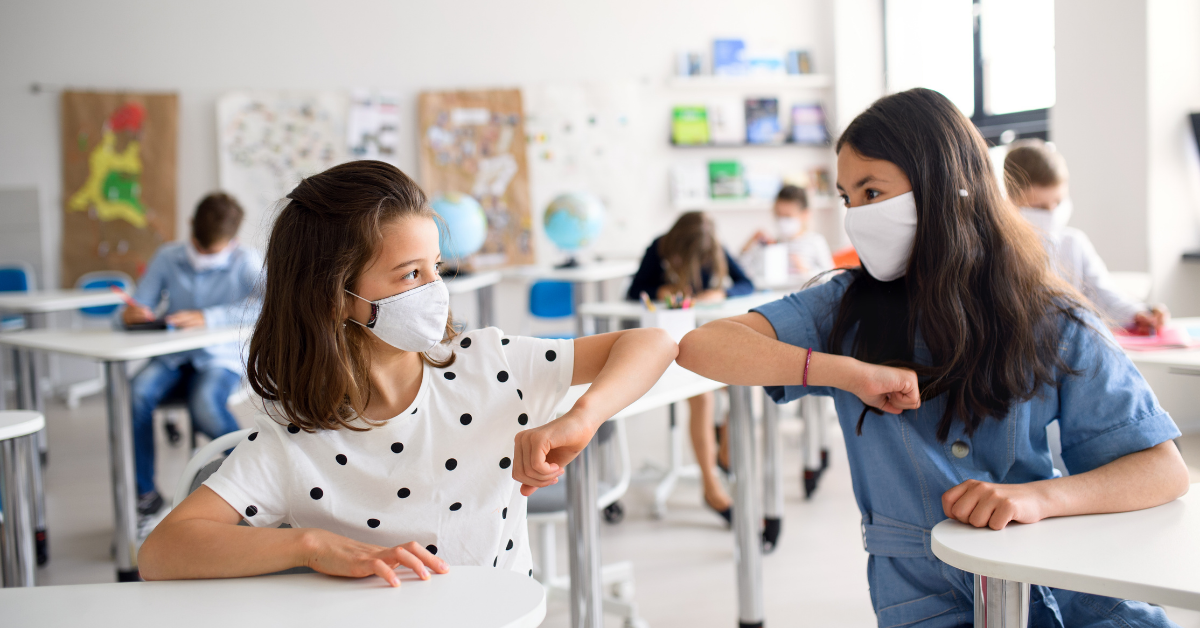
Gearing up for back to school? Here’s a parent’s guide to help you navigate your child’s return to in-person instruction in a COVID-19 world.
Last year, we skipped back-to-school sales and instead learned how to operate tablets and Zoom for virtual classrooms. This fall, students and teachers are preparing for a return to in-person instruction while parents navigate supply lists, clothing needs, vaccine eligibility and safety precautions to help their children stay well in the classroom.
Tryon Medical Partners Gaston recommends that parents have conversations with their children about the importance of taking precautions, washing hands often and wearing a face mask when indoors. Remember to follow guidance from the Centers for Disease Control and Prevention (CDC) and reference this guide of helpful tips for a safe return to in-person instruction.
1. Get vaccinated
Tryon Medical Partners Gaston strongly recommends people age 12 and up get vaccinated wherever and however they can. The vaccines offer protection against serious illness, hospitalization and helps reduce the spread of coronavirus. With COVID vaccines unavailable for kids under 12, it’s important that everyone else get vaccinated to help protect young students and high-risk and vulnerable individuals from COVID-19, virus variants and other respiratory illnesses.
2. Wear a face mask
Wearing a face mask helps reduce the spread of COVID-19 and other respiratory illnesses such as influenza. The CDC has updated guidance for students and teachers returning to in-person learning in grades K-12. Even though some school districts have made face masks optional, the CDC continues to emphasize the importance of wearing face masks to help protect the unvaccinated and young students that are not yet eligible for the vaccine.
The key to successful masking with children is practice and repetition. Have them try modeling safe behavior for a short trip to the grocery store, for example.
3. Wash hands often
Proper hand hygiene is key to reducing the spread of germs. Everyone should wash their hands with soap and water for at least 20 seconds or use an alcohol-based hand sanitizer with at least 60 percent alcohol if soap and water are not readily accessible.
4. Know the school’s cleaning plan
It’s important for parents to know the school’s plan for cleaning and disinfecting classrooms and common areas. The CDC recommends that classrooms be cleaned daily with disinfectants to sufficiently remove potential germs on surfaces and help reduce the risk of spreading infection.
5. Find out the school’s process in case of a COVID-19 outbreak
Parents need to clearly understand what will happen when the school has a diagnosed COVID-19 case and how they will communicate closures of classrooms or shifts to virtual learning. Plan to have a designated school workstation at home so children can seamlessly transition from in-person instruction to the virtual classroom if needed.
6. Keep a three-foot distance from others
We know the importance of in-person learning and how it benefits students, but we must be cautious in environments where not everyone is fully vaccinated. In general, the CDC recommends people who are not fully vaccinated to keep at least a six-foot distance from those not in their household. This is hard to do in a classroom, but based on several studies from last year, the CDC recommends students maintain at least three feet of physical distance to help reduce the transmission of COVID-19.
7. If you have symptoms, get tested
If your child or someone in your household starts to experience symptoms, get tested and stay at home and away from others for the recommended 10-day time frame. If you’re unsure about the symptoms, talk with your trusted physician and they can recommend the best method and closest testing site.
As we head back to school, we should remember to practice patience and understanding. With this return to in-person instruction amid an increase in COVID cases and variants on the rise, things can be difficult for everyone.
Until we have vaccinations approved for all ages, we must remain cautious and continue to practice safety measures in public settings for everyone’s benefit. To make sure your family is prepared to return to school, schedule an appointment with your doctor today.
